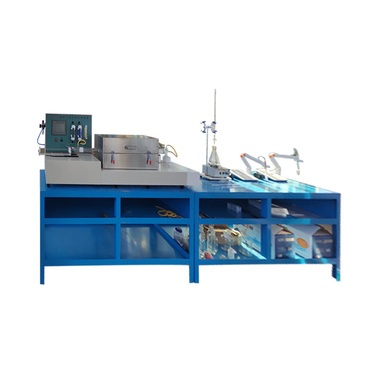smoke density test chamber
Understanding Smoke Density Test Chambers Importance and Applications
Smoke density test chambers are specialized environments designed to evaluate the smoke production characteristics of materials under various conditions. These chambers play a crucial role in safety testing for a wide range of products, including construction materials, textiles, and automotive components. By simulating fire conditions, these chambers help determine how a material behaves when subjected to heat and flame, particularly in terms of the quantity and density of smoke produced.
The Need for Smoke Density Testing
In fire scenarios, smoke density is a major concern. High-density smoke can reduce visibility, impair escape efforts, and contribute to toxic inhalation. Consequently, understanding a material's smoke production is vital for ensuring compliance with safety regulations and protecting life and property. Industries are mandated to adhere to specific standards set by organizations, such as the National Fire Protection Association (NFPA) and Underwriters Laboratories (UL), which stipulate testing requirements for smoke density.
The Mechanics of Smoke Density Test Chambers
A smoke density test chamber is typically engineered to create a controlled environment where materials can be tested under predetermined conditions. The chamber is designed to accommodate various sizes and types of samples, whether they are small pieces of fabric or larger structural elements.
The testing process generally involves igniting a sample in an oxygen-controlled environment. The combustion generates smoke, which is then analyzed to measure its density. Advanced optical systems, such as transmissometers, are often employed to detect the amount of light that passes through the smoke. This helps quantify smoke density by calculating the percentage of light obscured by the smoke produced during combustion.
Key Standards and Procedures
smoke density test chamber

Smoke density tests commonly adhere to established standards, such as ASTM E662 or ISO 5659, which outline specific procedures for conducting the tests, equipment requirements, and acceptable limits for smoke production. These standards ensure consistency and reliability in results across different laboratories and test scenarios.
The evaluation typically involves two critical measurements the specific optical density (D) and the smoke growth rate (SGR). Specific optical density measures how much smoke obscures light, while the smoke growth rate indicates how rapidly smoke density increases over time—offering insights into the combustibility of the tested material.
Applications Across Industries
Smoke density test chambers are invaluable across multiple industries, where fire safety is paramount. In construction, architects and engineers rely on smoke density testing to ensure that materials meet safety standards for building codes. In the automotive sector, manufacturers assess the combustibility and smoke emissions of materials used in vehicle interiors, which is crucial for passenger safety during a fire incident.
Textile manufacturers also make extensive use of smoke density testing. Fabrics used in furniture, clothing, and protective gear are subjected to these tests to gauge their safety and compliance with flammability regulations. Similarly, electronic components undergo examination to prevent hazardous smoke emissions in the event of overheating or electrical failure.
Conclusion
In an era where safety regulations are becoming increasingly stringent, smoke density test chambers serve an essential role in preventing fire-related hazards. By effectively measuring and analyzing smoke production from different materials, these chambers contribute to better safety outcomes across various industries. As technology advances, the capabilities of smoke density test chambers continue to improve, ensuring more accurate, reliable, and efficient testing methodologies that prioritize consumer safety and regulatory compliance. Ultimately, the importance of these testing chambers cannot be overstated; they are a critical component of fire safety engineering, providing peace of mind in environments where the risks of fire are ever-present.
-
reliable-performance-testing-with-advanced-aging-chamber-solutions
NewsAug.23,2025
-
advancing-precision-with-profile-projector-technology
NewsAug.23,2025
-
uv-led-ultraviolet-crosslinking-technology-innovation-and-prospects
NewsAug.23,2025
-
ensuring-safety-and-compliance
NewsAug.23,2025
-
electrical-properties-testing-in-modern-applications
NewsAug.23,2025
-
universal-tensile-testing-machine-applications-in-modern-electrical-and-material-testing
NewsAug.23,2025
 Copyright © 2025 Hebei Fangyuan Instrument & Equipment Co.,Ltd. All Rights Reserved. Sitemap | Privacy Policy
Copyright © 2025 Hebei Fangyuan Instrument & Equipment Co.,Ltd. All Rights Reserved. Sitemap | Privacy Policy

